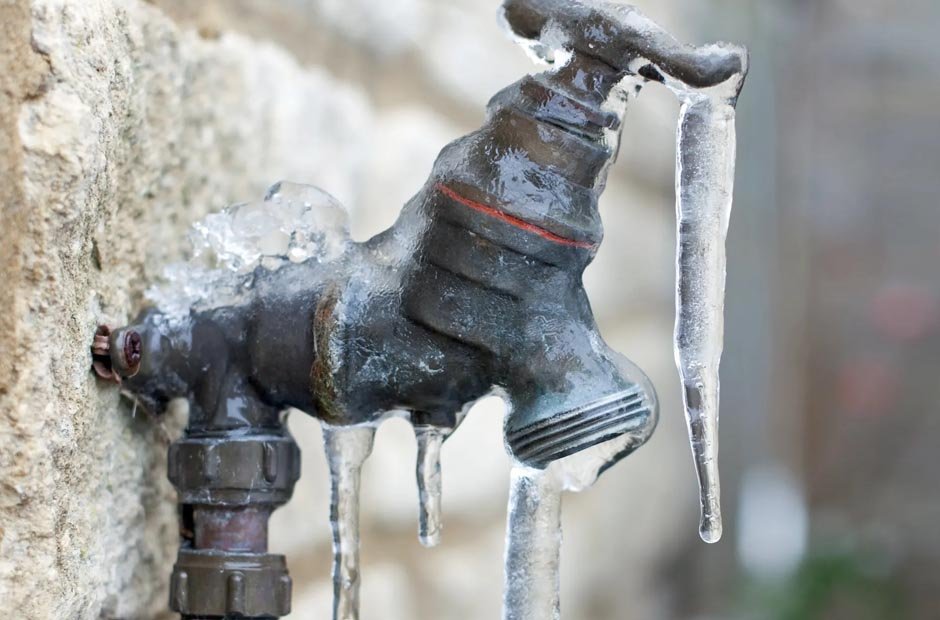Winter’s snowy blanket and plummeting temperatures heighten homeowners’ pressing concern for the risk of frozen pipes, noticed JTS Management Team. When water within pipes freezes – a process that expands it – potential pipe bursts and subsequent water damage become imminent threats. Thus, to preserve not only their home’s plumbing system integrity but also avoid costly repairs: preventing frozen pipes is paramount. This article: it delves into fundamental HVAC strategies–a must for safeguarding your pipes during wintry conditions.
1. Proper Insulation
To prevent frozen pipes effectively, ensure proper insulation: identify vulnerable areas where pipes are exposed to cold air–attics, basements and crawl spaces. Use materials such as foam insulation or heating tape; these create a barrier against the frigid temperatures.
2. Seal Drafts and Cracks
Examine your home meticulously: identify any drafts and cracks that could potentially permit cold air intrusion–thus altering the temperature of your pipes. Proceed to seal all gaps in windows, doors and walls vigorously; this will foster a warmer environment around your plumbing. By doing so, you not only mitigate freezing risks but also enhance overall energy efficiency significantly.
3. Maintain Adequate Heating
Consistently heating your home is crucial to prevent frozen pipes: thus, even in your absence–ensure a minimum temperature is maintained. By doing so, you guarantee that all areas of your dwelling receive ambient warmth – including those spaces where crucial plumbing lies dormant during winter months; this simple step can indeed go a long way towards safeguarding against potential damage.
4. Drip Faucets Strategically
Faucets, when allowed to drip at a slow pace, prevent the stagnation of water in pipes and subsequently reduce freezing risks. The constant flow–even minimally–of water counteracts pressure buildup resulting from expansion during freezing.
5. Open Cabinet Doors
Often, the cabinet doors under sinks and vanities house susceptible pipes to freezing. On particularly cold nights: open these cabinet doors–this allows warm air from the room to circulate around them, offering an additional layer of insulation.
6. Disconnect and Drain Outdoor Hoses
Improper management of outdoor hoses can contribute to frozen pipes. Disconnect the hoses from outdoor faucets, and thoroughly drain any residual water: this precaution prevents potential damage–both to the hose itself and its connected indoor pipes–by freezing water within it.
7. Use Pipe Insulation Sleeves
Consider employing pipe insulation sleeves for enhanced protection: these specialized designs fit snugly around your pipes, offering an additional layer of thermal safeguarding. This proves especially advantageous to pipes situated in scantily insulated regions–chiefly exterior walls; thus fortifying their resistance against temperature variations and potential damage.
8. Invest in a Programmable Thermostat
With a programmable thermostat, you can efficiently regulate your home’s temperature. Set lower temperatures during periods of house emptiness and elevate them prior to the coldest part of the night. Such practice not only economizes energy costs but also sustains consistent warmth levels to circumvent frozen pipes.
9. Install Heat Tape
Heat tape – or heating cable: a valuable tool in the prevention of frozen pipes; its application involves wrapping it around vulnerable areas, particularly those that are difficult to insulate adequately.
10. Winterize Unoccupied Properties
During the winter, ensure you take extra precautions to effectively winterize your vacant property: Shut off its water supply; drain pipes thoroughly–and consider introducing antifreeze into plumbing traps. In doing so–even without regular heating in operation–you guarantee protection for your property against frozen pipes.
Conclusion
To prevent frozen pipes: a proactive undertaking necessitates insulation, consistent heating – and strategic precautions. Homeowners can safeguard their plumbing systems and circumvent the headaches associated with burst pipes by implementing these HVAC tips during winter months; this not only protects your home but also guarantees you an untroubled season of comfort for yourself–and all members of your household.


